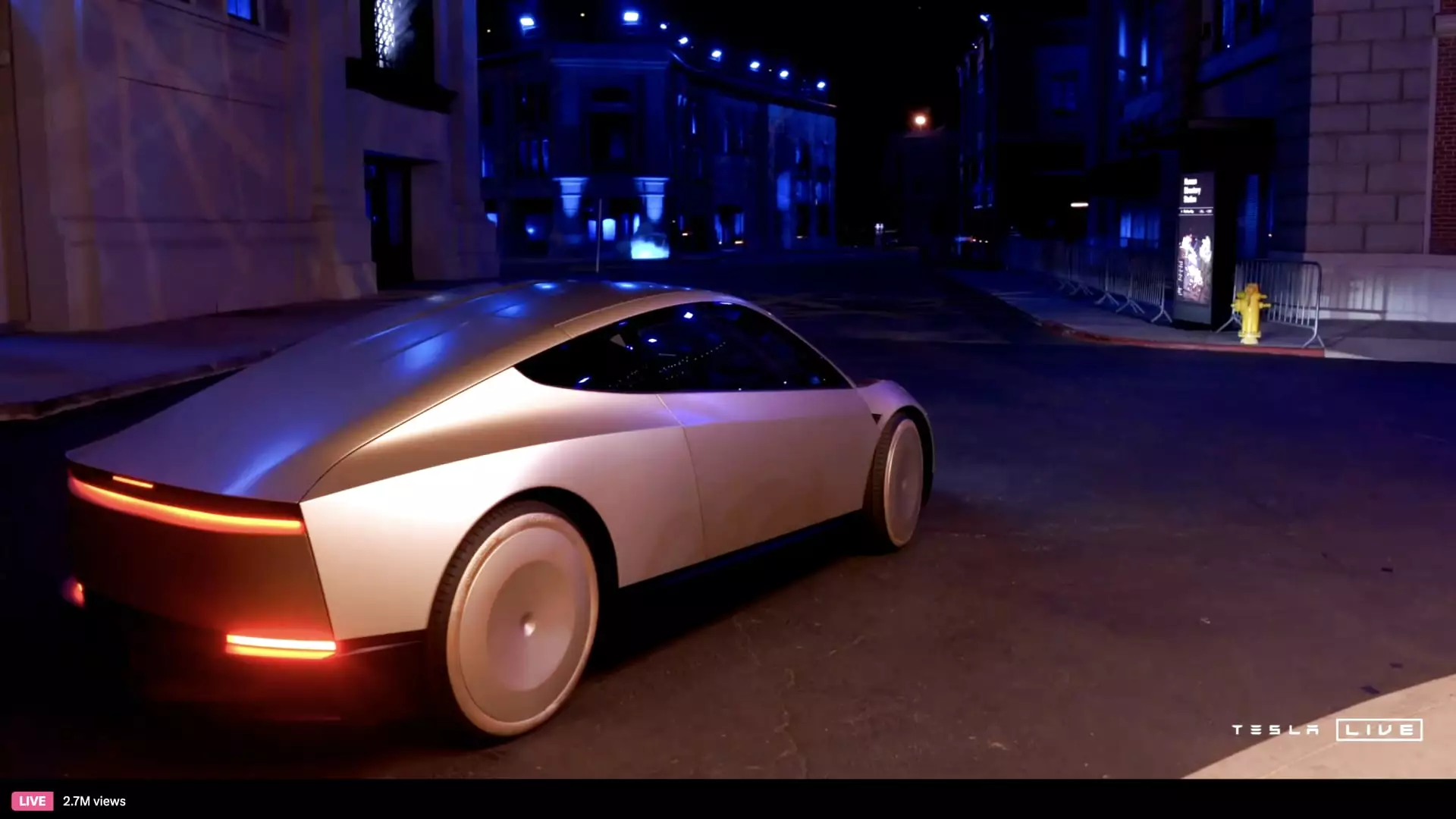The realm of autonomous vehicles has always sparked a mixture of enthusiasm and skepticism, particularly as the promises made by major players often remain unfulfilled. Recent developments at Tesla, led by its enigmatic CEO, Elon Musk, have reignited debates about the future of driverless technology. The highly anticipated Cybercab concept unveiled during the company’s exclusive event in Burbank, California, has left many questioning whether this innovation will actually materialize or whether it is yet another example of Musk’s tendency to oversell.
During his presentation, Musk showcased a sleek, low-silver two-seater Cybercab, devoid of traditional driver controls such as pedals or a steering wheel. This futuristic vehicle is part of Tesla’s grand vision for a new era in personal transportation, where the human element in driving becomes obsolete. Musk mentioned that there were already 21 Cybercabs present at the event, along with 50 advanced autonomous vehicles ready for demonstration. While the sight of these machines certainly paints an intriguing picture, details regarding their actual production locations and timelines remained conspicuously vague. Musk asserted goals of pricing the Cybercab below $30,000 and hinted at a production start date before 2027. However, investors and skeptics alike may wonder whether these timelines are realistic given Tesla’s history.
Musk’s ambitious statements extend beyond the Cybercab alone. He is also striving for what he describes as “unsupervised FSD,” which he claims will roll out in models 3 and Y in regions like Texas and California as soon as next year. However, context reveals a different narrative. Currently, Tesla’s Full Self-Driving system requires a human driver to stay alert and ready to take control at a moment’s notice—defined by Musk as “supervised” operation. The previous exuberance surrounding FSD has been met with dashed hopes, as timelines have continuously shifted. The backdrop to the Cybercab reveal is littered with Musk’s unmet promises, heightening skepticism surrounding his claims.
Historically, Tesla’s roadmap for full autonomy has been dotted with overreach. Musk’s 2015 proclamation that Tesla would achieve full autonomy within three years fell short; similarly, his 2019 assertion of one million robotaxi-ready vehicles by 2020 never materialized. These inconsistencies have not gone unnoticed, and they underscore a pattern of setting overly ambitious timelines. Investors listening to Musk’s latest pronouncements must weigh his visionary promises against a backdrop of repeated delays.
Despite this, a palpable sense of hope persists among the Tesla loyalists who hold fast to Musk’s vision of a future paved with robotic taxis and hassle-free commutes. Musk pointedly remarked that anyone doubting Tesla’s progress on autonomy should reconsider their investment. Yet, in an age where trust in corporate promises is waning, one must wonder if this kind of bravado is sufficient to maintain investor confidence.
Innovative Solutions or Ambitious Fantasies?
The announcement of an electric Robovan that can transport both people and goods adds another layer to Tesla’s ambitions. Musk claims this vehicle aims to solve problems related to high-capacity transport—a nod to efficiency and modern utility. The potential inclusion of inductive charging technology, where vehicles could recharge without traditional plugging in, suggests innovation. Yet, for all the technical excitement, one must question whether these innovations will translate into market-ready solutions.
As Tesla continues to unveil its futuristic objectives, the company faces a crossroads. The electric vehicle industry is vibrant and competitive, populated by numerous players with substantial resources vying for dominance. Therefore, while Musk’s charisma and vision certainly persuade many, the critical observer must ask if these dazzling unveilings can evolve into tangible products that enhance the future of transportation.
As we stand at the intersection of innovation and skepticism, the anticipation surrounding Tesla’s futuristic vehicles encapsulates both hope and doubt. With past promises serving as a shadow over current claims, one must exercise caution in believing in a new era of cyber transport. The Cybercab might symbolize the pioneering spirit of Tesla, but only time will tell if this spirit translates into reality or remains a mere mirage. In the fast-evolving space of autonomous vehicles, grounded optimism blended with critical scrutiny may just be the ticket towards truly autonomous driving.


Leave a Reply